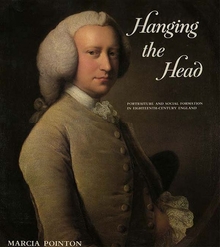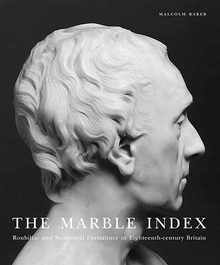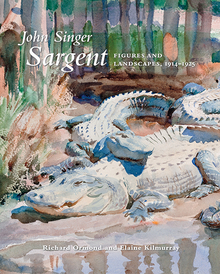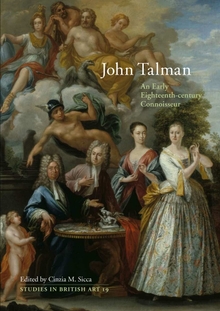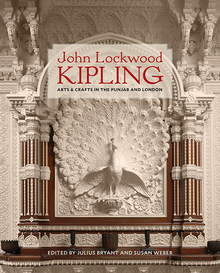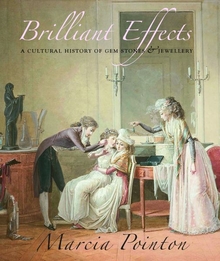Hanging the Head
WARNING
You are viewing an older version of the Yalebooks website. Please visit out new website with more updated information and a better user experience: https://www.yalebooks.com
Portraiture and Social Formation in Eighteenth-Century England
Marcia Pointon

Read this book online via the A&AePortal, our art and architectural history eBook platform. To learn more about how to access this book, please contact us.
Out of Print
In this original and stimulating book, Marcia Pointon demonstrates how portraiture provided mechanisms both for constructing and accessing a national past and for controlling a present that appeared increasingly unruly. Through detailed historical analyses of particular aspects of portrait representation—images of criminals, the fashions and rituals around the masculine culture of hair and wigs, the gendering of childhood in celebrated paintings like Penelope withwith or 'Pinkie'—Pointon establishes the rich and complex ways in which portraiture reflected eighteenth-century England. How 'the head' was hung—whether it be a matter of the disposition of an actual body or the image of that body—was determined by social rules of posture and decorum, by artistic convention and commercial practice, and literally by the ways in which patrons chose to arrange particular portraits on walls—paintings that served ritual and symbolic as well as decorative functions.
This handsomely illustrated book makes a major contribution to our understanding of portraiture as a cultural and political phenomenon in eighteenth-century Britain. It will be of great interest to art historians and to those concerned wtih the history of material culture, to museums specialists and to all concerned wtih literature, politics, and visual culture in eighteenth-century England.
"[Few] will fail to admire [Pointon's] scholarship or the provocative brilliance of much of what she has to say in a book which is . . . a work of art in its own right."—Patrick Taylor-Martin, Literary Review
"Handsomely produced and also, at times, highly thought-provoking."—Martin Postle, Royal Academy Magazine
"In this original and provocative book, Marcia Pointon demonstrates, in a wonderful range of contexts, personal, political and social how the system of portraiture in eighteenth-century England both defined and reflected the self-identity of the individual and society."—National Art Collections Fund in announcement of shortlist for 1993 National Art Book Prize
"An impressive and important contribution to the study of the history of portraiture. The liveliness of the author's approach is matched by the range and depth of the research. . . . This book is of major importance to anyone interested in the relationship between portraiture and society. Pointon offers approaches to familiar works which are entirely original, stimulating and compelling."—Joan Crossley, Women's Art Magazine
"Fascinating . . . an excellent example of the new art history, which is firmly grounded in a thorough knowledge of the history and methodology of art but is far broader and more comprehensive in its approach and interpretation particularly relating to politics and meaning. . . . Provocative . . . fascinating in every detail."—Choice
"Impressive . . . comprises a fascinating historical analysis and methodological sophistication which maps new ground in the study of portraiture and provides an excellent model for future generations of researchers. . . . thorough analysis of how portraits were hung in country houses and town halls fills a significant gap in the scholarly literature, and interpretations of some individual portraits . . . are inspired or provocative."—Shearer West, Times Literary Supplement
"Original and perceptive. . . . A wide-ranging investigation of portrait painting as a business enterprise during the peak period of the 1780s. . . . The measure of the importance of this thought-provoking volume is its fresh approach, choosing revealing areas of enquiry to probe eighteenth-century attitudes of mind."—John Hayes, The Art Newspaper
"[Pointon provides] a new richness of ideas and a density of reference which will make Hanging the Head the essential starting point for any study of the British portrait, and indeed, for portraiture in general."—John Gage, Art History
"In this lavishly produced book Professor Pointon has brought together a vast quantity of fascinating material. . . . One can only marvel at the author's sheer industry."—David Mannings, British Journal of Aesthetics
"[A] polished and sophisticated piece of scholarship (also accompanied by lavish color illustrations), interweaving many persuasive arguments and examples along with more speculative ones."—Susan P. Casteras, Woman's Art Journal
"A lively and inventive book, offering an unusual perspective on familiar works. The illustrations are magnificent and Pointon provides fascinating information."—David Nokes, The Spectator
Publication Date: January 21, 1998
Publishing Partner: Published for the Paul Mellon Center for Studies in British Art
200 b/w + 40 color illus.

